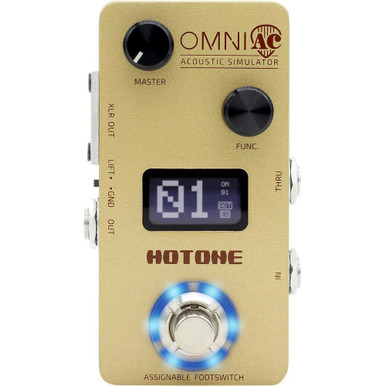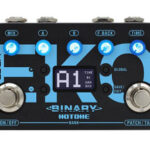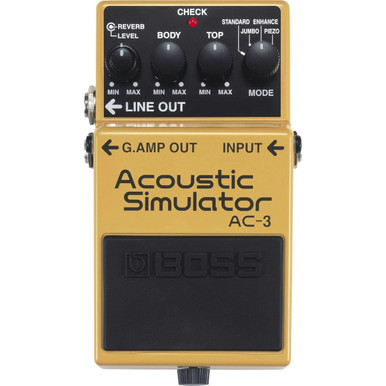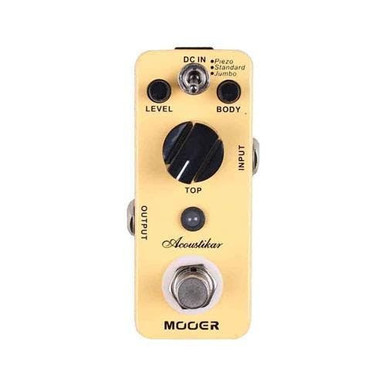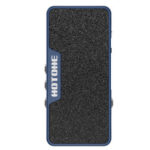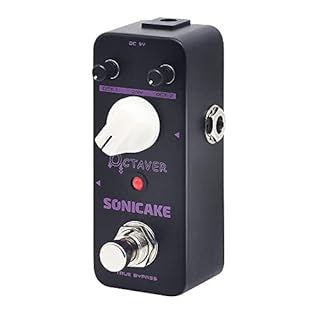Description
Hotone Guitar Pedals are fresh in, this is a New one & the Just Pedals team think it is a very nice one too. Good news ! This can be delivered straight to your door, quickly and securely, anywhere in the UK & Europe. For more info on this New Guitar Pedals, please read on for full details, demos, videos, reviews and order online.
The Hotone Omni AC is an acoustic simulator pedal designed to work with both electric and acoustic guitars. For electric guitarists, the Omni AC lets you instantly access acoustic tones at the press of a switch. No more switching guitars, you can play the acoustic and electric sections of the song with the same guitar. Acoustic guitarists can use the Omni AC to instantly switch up their acoustic tone to distinctly different sound.
The Omni AC features 15 acoustic simulations including various steel-string, nylon-string, acoustic bass, and double bass sounds and more. In addition to the acoustic sounds there's a 4-band EQ, a 12dB max. cut/boost, a high-resolution OLED screen, an assignable footswitch, as well as a choice of 1/4" or XLR output and a headphone jack.
Features
- Compact, easy-to-use acoustic simulator pedal for acoustic and electric instruments
- Advanced DSP platform with high quality 24-bit A/D/A conversion and great dynamic response
- Internal voltage boost circuit for great headroom with standard 9V DC power supply
- 15 high quality acoustic simulations including steel strings, nylon strings, acoustic basses, double basses and more
- Detailed 4-band EQ with flexible frequency range and 12dB max. boost/cut
- USB jack for firmware upgrading and managing presets with free PC/Mac software
- Aux In and headphone output for practicing and jamming
- 15 Presets
- Built-in hi-res OLED screen
- Assignable footswitch with LED
- 9V DC power supply
Specifications
- Weight: 224g
- Dimensions: 58mm (W) x 101mm (D) x 47mm (H)
- Current Consumption: 200mA
